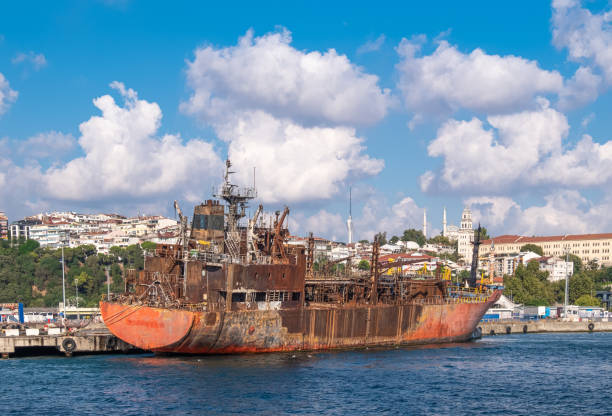Environmentalists are alarmed by the infamous Guanbara Bay in Rio de Janeiro, which is known as the “graveyard of ships.” For more than six years, they have anchored one of the ships. 50 tonnes of fuel oil remained inside the corroding Sao Luiz ship. Activists believe that the “graveyard of ships” is about to unleash a catastrophe on the environment.
On a stormy evening in mid-November, a large, abandoned cargo ship drifted slowly in the direction of the massive concrete bridge that carries automobiles across Guanabara Bay in Brazil to Rio de Janeiro. This is not an uncommon view.
The 1994-built, 200-meter-long (660-foot), rust-spattered Sao Luiz bulk ship is thought to have been waiting for legal action for more than six years before crashing with Latin America’s largest over-water bridge while anchored in the harbor. The navy claimed to be looking into it.
According to Sergio Ricardo, co-founder of the socio-environmental organization Movimento Baia Viva (Living Bay Movement), the Sao Luiz is still in the Port of Rio today and is carrying 50 tons of fuel oil in addition to having severe corrosion, he told Reuters.
Some ships still carry dangerous cargo
He claimed that the ship is dangerous and capable of wreaking environmental havoc.
Around the world, owners abandoning ships frequently do so due to financial and legal issues.
The Sao Luiz is one of the dozens of ships that have been abandoned to rust in the famous but severely polluted bay that was once home to enormous mangrove forests and a healthy marine ecosystem.
Flora and fauna are exposed to pollution from the rusting ships
The mangroves have significantly diminished, and the native sea horses, green turtles, and Guiana dolphins—a hallmark of Rio de Janeiro—are now in danger due to pollution that the ship graveyard has compounded.
Only 34 Guiana dolphins were still present in the bay, compared to an estimated 800 in the 1990s, according to a survey conducted by the Rio de Janeiro State University this year.
Ricardo calculated that the pollution in the bay imposes a financial penalty of some tens of billions of reais a year with its pollutants, in addition to the effect the ships have on marine life and passing vessels, who must navigate an obstacle course of partially floating hulks.
The fish population diminished significantly
62-year-old Fernando Pinto Lima, a former fisherman in the area, told Reuters he used to be able to get 50 to 100 kg of fish in a short period of time. It will take you a week or a month to catch fifty kg, he warned.
Local media said that following the Sao Luiz catastrophe, officials were looking into how to get rid of the phantom ships. However, the abandoned ships are still rotting on and beneath its murky waters.

